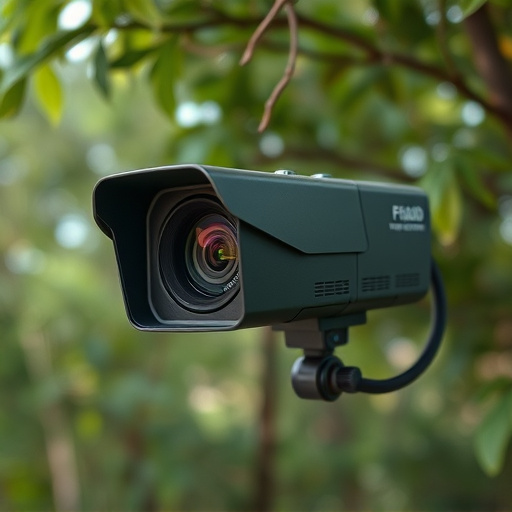Wireless Night Vision Security Cameras Indoors offer advanced security solutions, capturing clear images in low-light conditions using infrared LED lights and sensitive image sensors. They help detect hidden monitoring devices through strategic tools and techniques like thermal imaging, visual inspections, and specialized software, ensuring privacy in today's digital era. These cameras and methods empower individuals and organizations to safeguard their indoor spaces from unseen surveillance.
Uncover hidden surveillance with our comprehensive guide on detecting monitoring device signals. In today’s digital age, privacy is paramount. This article equips you with essential knowledge about wireless night vision security cameras indoors and practical tips for their detection. From understanding camera functionality to advanced techniques that reveal hidden indoor surveillance disguised as everyday objects, we provide the tools to navigate this complex landscape. Stay informed, stay safe.
- Understanding Wireless Night Vision Camera Functionality
- Practical Tips for Detecting Hidden Monitoring Device Signals
- Advanced Techniques to Uncover Indoor Surveillance Cameras Disguised as Everyday Objects
Understanding Wireless Night Vision Camera Functionality
Wireless Night Vision Security Cameras Indoors operate by leveraging advanced technology to capture clear images in low-light conditions, providing comprehensive security solutions for your home or office. These cameras utilize infrared (IR) LED lights that emit invisible light waves, which are reflected off objects and back to the camera sensor, enabling it to record high-resolution footage even in complete darkness. This feature is particularly useful for indoor spaces where natural light might be limited, ensuring continuous monitoring without compromising on visual clarity.
Understanding how these cameras function involves grasping the interplay of image sensors, IR illumination, and digital signal processing. Modern wireless security cameras are equipped with highly sensitive image sensors that detect even minute amounts of light, enhancing visibility in dimly lit environments. The IR LEDs emit light in the near-infrared spectrum, which is not visible to the human eye but allows the camera to capture details typically obscured by darkness. This combination of advanced technology ensures that your indoor spaces remain under constant surveillance, offering peace of mind and enhanced security.
Practical Tips for Detecting Hidden Monitoring Device Signals
Detecting hidden monitoring device signals can be a challenging task, but with the right tools and techniques, it becomes more manageable. One of the most effective ways to uncover covert surveillance is by utilizing wireless night vision security cameras indoors. These advanced devices are designed to penetrate darkness, providing clear images even in low-light conditions, which makes them ideal for identifying hidden camera signals. By strategically placing such cameras in areas where privacy is a concern, you can actively monitor and detect any unusual electromagnetic emissions or signal interruptions that might indicate the presence of monitoring devices.
Additionally, it’s crucial to stay vigilant with regular checks and inspections. Look for signs of tampering or unusual installations, especially in common hidden spots like corners, behind furniture, or under objects. Using specialized equipment for signal scanning can also assist in identifying frequency ranges commonly used by hidden cameras. By staying proactive and employing these practical tips, you enhance your chances of successfully detecting and neutralizing hidden monitoring device signals, ensuring a safer and more secure environment.
Advanced Techniques to Uncover Indoor Surveillance Cameras Disguised as Everyday Objects
In the digital age, where privacy concerns are on the rise, uncovering hidden monitoring devices, such as surveillance cameras disguised as everyday objects, has become a crucial skill. One of the most advanced techniques to detect these indoor wireless night vision security cameras is to utilize specialized thermal imaging technology. Unlike visible light cameras that rely on reflections and contrast, thermal imaging captures heat signatures, making it an effective way to spot hidden devices, especially when they are powered on but not actively recording. This technology can reveal unusual heat patterns or subtle variations in temperature, indicating the presence of a camera lens or other components absorbing or emitting heat differently from their surroundings.
Additionally, professionals employ meticulous visual inspections and advanced software tools that analyze images for telltale signs. For instance, looking for small lenses, irregular shapes, or subtle reflections in windows, mirrors, or other reflective surfaces can provide crucial clues. Dedicated software algorithms can also process images to detect minute anomalies, such as slight variations in lighting or texture, which might indicate the presence of a hidden camera. These advanced techniques empower individuals and organizations to protect their privacy by ensuring that indoor spaces are free from unseen surveillance devices, especially wireless night vision security cameras disguised as ordinary items.
Uncovering hidden monitoring devices, such as wireless night vision security cameras indoors, requires a blend of technical knowledge and keen observation. By understanding how these cameras operate and employing practical tips like signal detection techniques, you can navigate the intricate landscape of surveillance technology. Advanced methods, including identifying disguised indoor surveillance cameras, further enhance your ability to ensure privacy and security in both public and private spaces. Remember that staying informed about these tactics is key to protecting yourself from potential unwanted observation.
